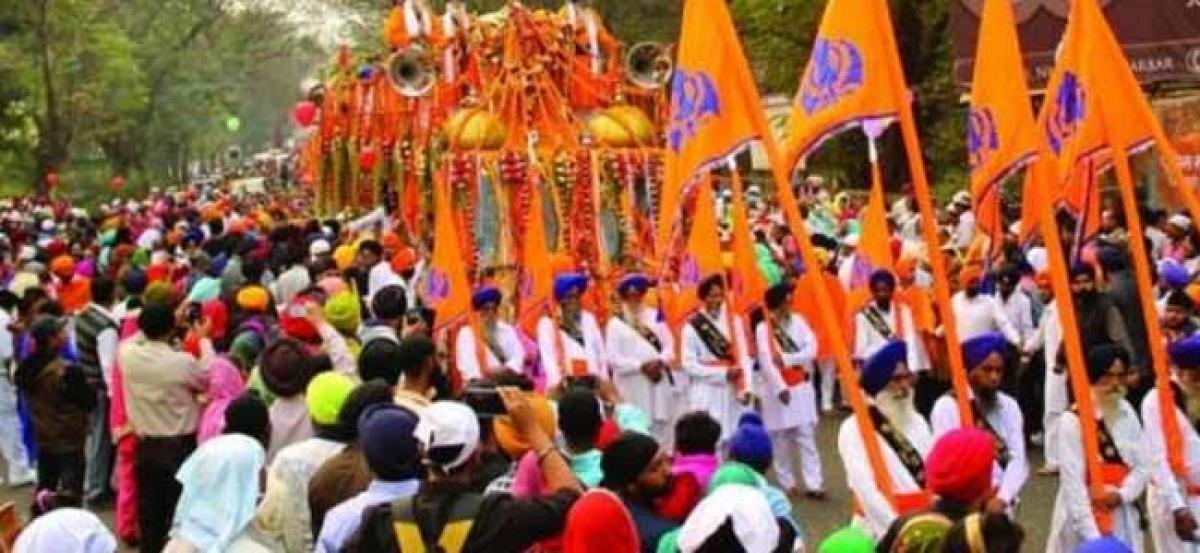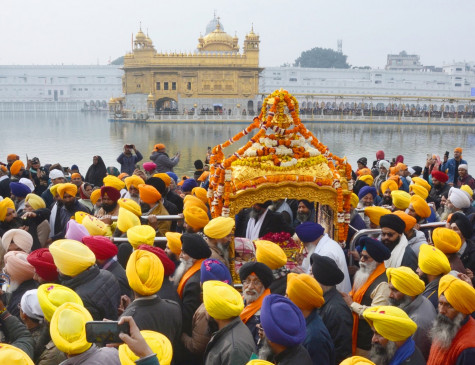Guru Gobind Singh born Gobind Das (22 December 1666 – 7 October 1708) was the tenth and last human Sikh Guru. He was a warrior, poet, and philosopher. In 1675, at the age of nine he was formally installed as the leader of the Sikhs after his father Guru Tegh Bahadur was executed by Emperor Aurangzeb. His father was the ninth Sikh Guru. His four biological sons died during his lifetime – two in battle and two executed by the Mughal governor Wazir Khan.

Guru Gobind Singh Ji
Among his notable contributions to Sikhism are founding the Sikh warrior community called Khalsa in 1699 and introducing the Five Ks, the five articles of faith that Khalsa Sikhs wear at all times. Guru Gobind Singh is credited with the Dasam Granth whose hymns are a sacred part of Sikh prayers and Khalsa rituals. He is also credited as the one who finalized and enshrined the Guru Granth Sahib as Sikhism’s primary holy religious scripture and the eternal Guru. He also established the concept of Guru Panth as his spiritual successor, however this manner of guruship is seldom evoked today.

Founding the Khalsa
In 1699, Guru Gobind Singh requested the Sikhs to congregate at Anandpur on Vaisakhi (the annual spring harvest festival). According to the Sikh tradition, he asked for a volunteer. One came forward, whom he took inside a tent. The Guru returned to the crowd alone, with a bloody sword.[56] He asked for another volunteer, and repeated the same process of returning from the tent without anyone and with a bloodied sword four more times. After the fifth volunteer went with him into the tent, the Guru returned with all five volunteers, all safe. He called them the Panj Pyare and the first Khalsa in the Sikh tradition.
Leave a Reply